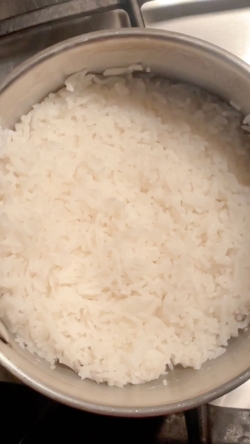Try our favorite, clean protein powder: See our top pick →
Try our favorite, clean protein powder: See our top pick →
Have you ever noticed how many varieties of rice there are?
Jasmine, basmati, arborio, short grain, long grain… it can be overwhelming.
Choosing the “right” rice has everything to do with your preference, health needs, and the dish you are preparing. For example, arborio is classically used to make risotto so you probably wouldn’t choose this for a stir fry.
Jasmine rice, on the other hand, is great for stir fry or as a stand-alone side dish.
Jasmine rice is a long-grain white rice that is thinner than most other grains. Additionally, it tends to be fluffier when cooked when compared to a short grain (like sushi rice) that tends to be clumpier in texture.
If you’re not familiar with cooking rice or maybe have had a few kitchen mishaps, we have you covered.
Our step-by-step method on how to make jasmine rice is a fool-proof way to get delicious, fluffy jasmine rice every time. It all comes down to liquid to rice ratio and cook time.
Follow these simple steps for the perfect jasmine rice.








Yes! Rinsing all types of rice is an important step prior to cooking. This rinses off extra starch and leaves the grains less likely to clump together. The water will initially run off with a white, milky color. When the excess starch has been thoroughly rinsed off, your water should run clear.
Jasmine rice generally needs less liquid than other grains of rice. If the liquid content is too high, the rice will end up mushy. It is important that you follow the liquid ratio specific to jasmine rice and not another variety. Additionally, skipping the step of rinsing your rice first can lead to clumpy rice.
Subscribe now and never miss anything about the topics important to you and your health.